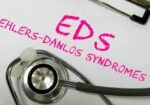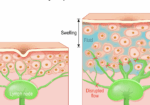Splinting and Stretch Protocol for Pediatric Trigger Thumb
Filed under Treatments
Tan, A. C., Lam, K. S., & Lee, E. H. (2002). The Treatment Outcome of Trigger Thumb in Children. Journal of Pediatric Orthopaedics B, 11(3), 256-259.
The Skinny:
Pediatric trigger thumb is a “relatively uncommon” condition of unknown origins. Studies have indicated that spontaneous recovery of trigger thumb is around 25-40%, and chances increase with age. Meanwhile, implementation of conservative treatment splint therapy, in conjunction with passive stretch programs (pediatric trigger thumb exercises), have shown successful recovery rate as great as 89%.
This review analyzes the success of nighttime/naptime only thumb extension orthotic wear in conjunction with a passive stretch exercises protocol (pediatric trigger finger exercises).

In the Weeds:
115 patients with noted flexion contracture deformity or present triggering/snapping were reviewed. Boys and girls were equally affected, as were left and right thumbs. 23 children had bilateral thumb involvement.
59 children, with an average age of 26.5 months, were treated surgically with A1 pulley release. 56 children, with an average age of 19 months, were treated conservatively with splint therapy.
Splint therapy consisted of nighttime/naptime wear of a thumb extension orthotic (see image) with regular clinic sessions for passive stretch to the thumb, and splint modifications to increase thumb/IP extension (pediatric trigger thumb splint).
Bringing It Home:
Conservative treatment showed an overall success rate of 66%. The success rate decreased with increasing age: from 89% in the under 1 year-old age group to 50% in the over 3 year-old old age group.
Of the 56 patients having conservative treatment, 31 had splint therapy and 25 had passive stretch only. Splint therapy resulted in 77% success rate compared to 52% with the stretch-only group, demonstrating that use of orthotic in conjunction with passive stretch shows the best recovery. Overall, 76% of patients were successfully treated conservatively within 6 months.
For those patients who underwent surgery, either initially or after failed conservative treatment, 1.4% had a recurrence of triggering, and 2.8% had subsequent wound infection requiring treatment with antibiotics.
Limitations: This article asserts that trigger thumb in pediatrics is most likely attributed to acquired injury rather than a congenital anomaly, as none of the participants presented with trigger thumb prior to
six months of age. However, this overlooks the concept that indwelling thumb is developmentally appropriate up through 5 months of age, so observation of thumb IP flexion or thumb flexion prior to
this age would not indicate referral, even if trigger thumb may be co-occurring.
The article does not directly compare the success rates of surgical versus conservative treatment methods. It explains the success rates of conservative treatments while only stating the failure rates of
surgical intervention, which skews the statistics against each other.
More To Read
Closed Pulley Injuries in Rock Climbers
Mechanism of injury Grades of pulley injury Treatment options for closed rupture Outcome measures Return to climbing Exercise considerations Resources Bollen S. R. (1990). Upper limb injuries in elite rock climbers. Journal of the Royal College of Surgeons of Edinburgh, 35(6 Suppl), S18–S20. Bosco, F., Giustra, F., Lusso, A., Faccenda, C., Artiaco, S., & Massè, A. (2022).…
Read MoreEDS 101: Understanding Hypermobility in the Hand Therapy Setting
EDS in the Hand Therapy Setting General Overview:Ehlers Danlos Syndrome (EDS) is a group of heritable connective tissue disorders caused bygenetic changes that affect collagen production, the protein responsible for strength and elasticityin skin, ligaments and tendons (The Ehlers Danlos Society, 2016). There are thirteen forms of EDS that each have their own set of…
Read MoreComparing Edema and Lymphedema: Understanding the Differences and Treatment Approaches in Hand Therapy
Comparing Edema and Lymphedema: Understanding the Differences and Treatment Approaches in Hand Therapy As hand therapists we often encounter patients presenting with swollen arms, hands, and/ or fingers, often attributing these symptoms to various conditions. Two commonly confused terms in this area are “edema” and “lymphedema.” While both involve swelling, they have distinct causes, presentations,…
Read MoreHow Weather Changes Affect Joint Pain
By: Lucas Godwin How Weather Changes Affect Joint Pain Numerous potential factors can cause weather-related joint pain, including humidity, temperature, precipitation, and changes in barometric pressure. Scientists have performed many studies on joint pain and weather over the years, but so far, none can say for sure what the connection is. Timmermans et al., 2015…
Read MoreSign-up to Get Updates Straight to Your Inbox!
Sign up with us and we will send you regular blog posts on everything hand therapy, notices every time we upload new videos and tutorials, along with handout, protocols, and other useful information.






